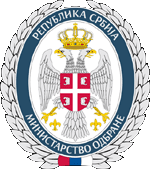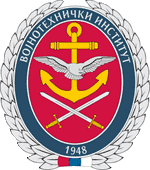|
REPUBLIC OF SERBIA MINISTRY OF DEFENCE
MINISTRY OF DEFENCE Material Resources Sector Defensive Technologies Department
|
CONTROLLING OF SWITCHED RELUCTANCE MOTOR DRIVE ACTUATION SYSTEM USING MICROCONTROLLER
Sudan University of Science and Technology, Khartoum, Sudan, raheegwahbi@yahoo.com EDWARD CHRISTOPHER University of Nottingham, Nottingham, United Kingdom, Edward.Christopher@nottingham.ac.uk OSMAN MUHAMMAD IMAM Karrary University, Khartoum, Sudan, moudy_fooly@yahoo.com
Abstract: The challenge in controlling the switched reluctance motor (SRM) that proposed to be an alternative actuation system in the coming all electric aircraft enhancing the longitudinal (vertical) stability when connected to the elevator is studied and illustrated through this research. This paper is a report of a project on a 2 pole SRM, including the selection of the motor winding and the reason of choosing them, the control procedure, current limiting circuit (hardware part), and programming needed to control the micro-processor. Controlling the speed and position done through controlling the firing angle taking into account that the torque is produced when the motor inductance is changing as the shaft angle is changing, delivering positive or negative torque depends on if the inductance is rising or going down. Experimental results support the theory of relation between torque, speed, current and rotor switching angle (firing angle). During the controlling the current had been limited and the firing angle was the variable to test with. Problems showed up with the move between the four-quadrant, noise and self-starting for the 2 poles model. Keywords: Switched Reluctance Motor (SRM), Elevator, Actuation System, Longitudinal Stability, Speed and position control.
|
|||||
|
||||||

